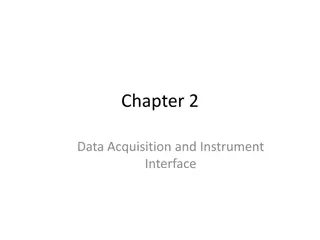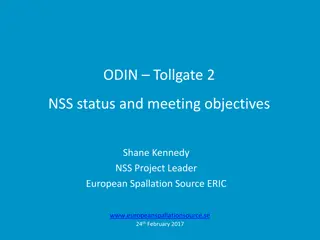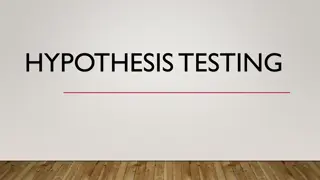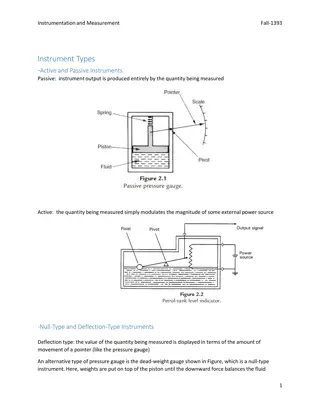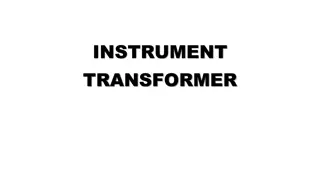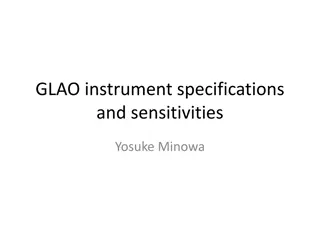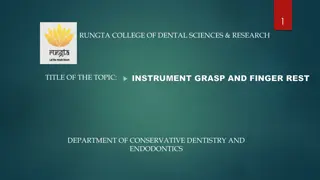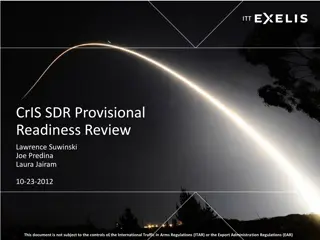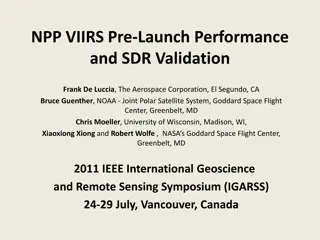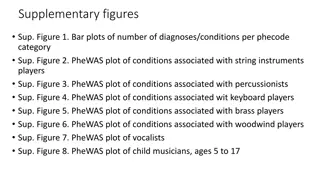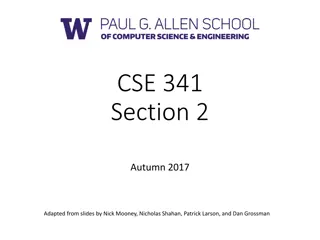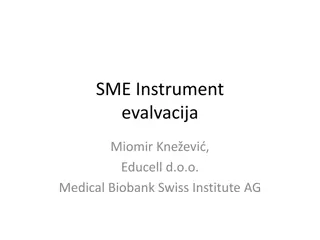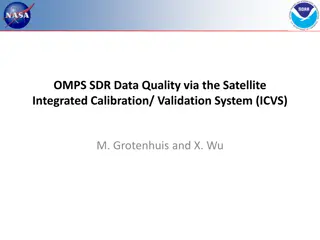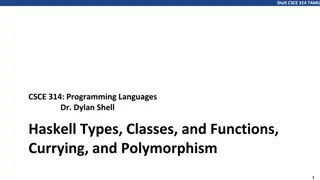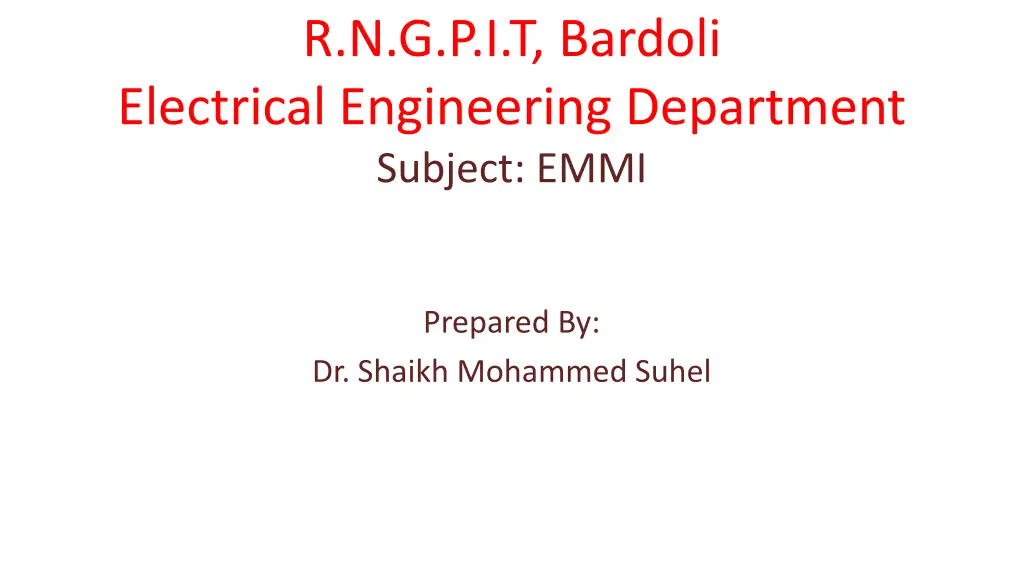
Electrical Engineering Lecture on Analog Instrumentation at RNGPIT Bardoli
"Learn about analog instrumentation in electrical engineering from Dr. Shaikh Mohammed Suhel at RNGPIT Bardoli. Explore dynamometer instruments, including construction, operation, torque equations, and more. Enhance your knowledge in electromechanical systems and power measurement techniques in this informative lecture."
Download Presentation

Please find below an Image/Link to download the presentation.
The content on the website is provided AS IS for your information and personal use only. It may not be sold, licensed, or shared on other websites without obtaining consent from the author. If you encounter any issues during the download, it is possible that the publisher has removed the file from their server.
You are allowed to download the files provided on this website for personal or commercial use, subject to the condition that they are used lawfully. All files are the property of their respective owners.
The content on the website is provided AS IS for your information and personal use only. It may not be sold, licensed, or shared on other websites without obtaining consent from the author.
E N D
Presentation Transcript
R.N.G.P.I.T, Bardoli Electrical Engineering Department Subject: EMMI Prepared By: Dr. Shaikh Mohammed Suhel
Prepared By: Name: Dr. Shaikh Mohammed Suhel (Assistant Professor RNGPIT, Surat) Former Assistant Professor in SCET, SNPIT&RC, VIT Qualification: PhD (Power- Electronics & Drives, NIT, Surat), M.Tech (Industrial Electronics, NIT- Surat), Gate, B.E. (Electrical Engineering., VNSGU- Surat). Experience: 13 Years.
CH: Analog Instrumentation This Lecture contain Electrodynamics or Dynamometer type instrument, Power measurement
Introduction Name: Dr. Shaikh Mohammed Suhel (Assistant Professor RNGPIT, Surat) Former Assistant Professor in SCET, SNPIT&RC, VIT Qualification: PhD (Power- Electronics & Drives, NIT, Surat), M.Tech (Industrial Gate, B.E. (Electrical Engineering., VNSGU- Surat). Experience: 13 Years. Electronics, NIT-Surat),
Dynamometer Type Instrument: Can current, voltage, power for both DC and AC up to 125Hz and with some modifications frequency meter. They are transfer type instrument as they have same accuracy for d.c and a.c. upto 125Hz i.e. They may be calibrated with d.c. source and then can be used without modification to measure a.c. Accuracy is very high and hence can be used in laboratory for calibration of other instruments. be used for measurement of as power factor &
Construction and operation: Consist of two coils 1) operating parts distribution moving coil. 2) deflecting torque (Td). The coils are air cored to avoid hysteresis & eddy current errors Spiral hair springs are used to supply current to MC and also to produce controlling torque. Fixed coil: field. to To produce into uniform around Split have flux 2 of Moving coil: Produce
Construction and operation: Air friction damping is used The operating field is very weak (0.005 eddy current damping cannot be used. Proper against using laminated steel shield. to 0.006 wb/m2), shielding stray is provided field magnetic
Let i1= instantaneous value of current in the fixed coils (A). i2= instantaneous value of current in the moving coils (A). L1=self inductance of fixed coil (H). L2=self inductance of moving coil (H). M=mutual inductance between fixed and moving coils (H) Flux linkages of coil 1, 1=L1i1+Mi2; Flux linkages of coil 2, 2=L2i2+Mi1 Electrical energy input=e1i1dt+e2i2dt d dt + + = e =i1d 1+i2d 2 ( id Li = + + + ) ( ) Mi i d L i Mi 1 1 1 2 2 2 2 1 = + + + + + 2 2 2 2 1 1 i Ldi Energy stored in magnetic field = i dL 1 2 ii dM i Mdi i L di 1 ( i dL 1 + 1 2 ii dM i L i Mdi 1 1 1 2 2 2 2 2 2 1 + 2 1 i L 2 2 1 2 ii M 2 2 1 2 ) 1 1 + + 2 1 i L 2 2 Change in stored Energy = 1 2 d i L 1 2 ii M 2 + 2 1 2 1 2 = + + + + + 2 1 i dL 2 2 1 1 i Ldi i L di i dL i Mdi i Mdi 1 2 ii dM 1 1 2 2 2 2 1 2 2 1
Electrical energy supplied =Incresed in stored energy+mech. work done mech. work done=Electrical energy supplied-Incresed in stored energy 1 mech. work done=2 1 2 + + 2 1 i dL 2 2 i dL 1 2 ii dM 1 2 mech. work done= ( & is constant) 1 2 ii dM ii dM L L 1 2 = iTd 1 2 dM d cT K = = T ii 1 2 i =ii dM 1 2 K d
Operation with DC: I1=Current in Fixed Coil I2=Current in Moving Coil dM d = T 1 2 ii d =ii dM 1 2 K d dM d = is constant then => non uniform scale if 1 2 ii
Operation with AC: I1=Im1 sin t I2=Im2 sin( t- ) As instantaneous current varies with time Tdalso varies with time. But due to inertia, moving system cannot follow such rapid variation and respond only to average torque. 2 1 dM d t i = sin sin( ) T i t dt 1 2 d m m 2 dM d T 0 1 T = T 1 2 ii T dt = T K = cT I I dM d dM d d d i = cos T 1 2 I I K 2 m m 0 d T 1 T dM d = T 1 2 ii dt = cos 1 2 d 0 dM d is constant then => cos if 1 2 ii
Operation with AC: If I1=I2=I then 2I If I1=I - , and I2=V/K2 0 cos v i P If current is passed through fixed coil and voltage is applied across moving coil then instrument measure average power and scale is uniform If I1=I2=V/K1then V 2
Disadvantage: Advantage of Moving Type Instrument: Low torque to weight ratio and hence low sensitivity. Highly expensive compare to other instrument ammeter. Scale is non uniform Frictional losses are high Higher power consumption compare to PMMC instrument. Accuracy high. Can both AC and DC. Free from hysteresis and loss is very for voltmeter and be used for eddy current


